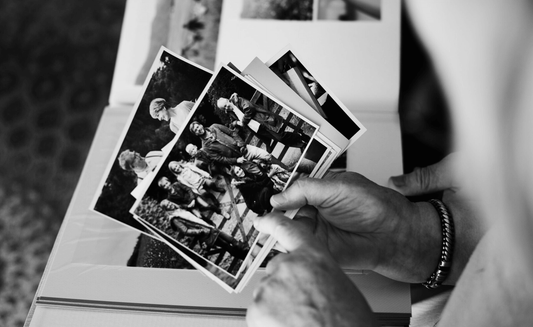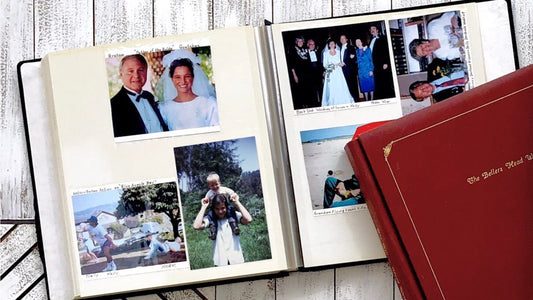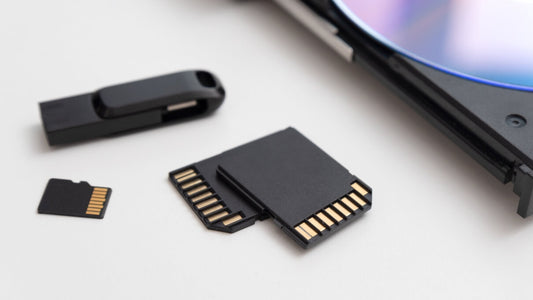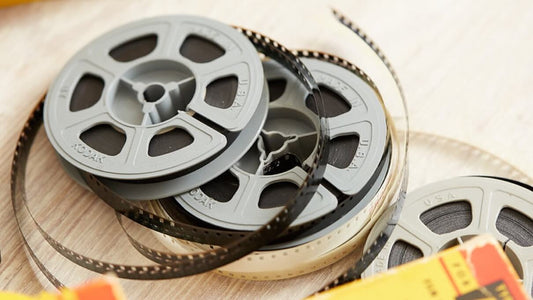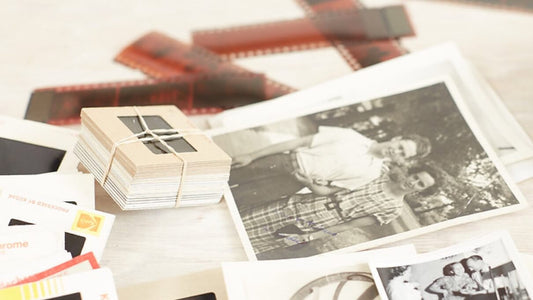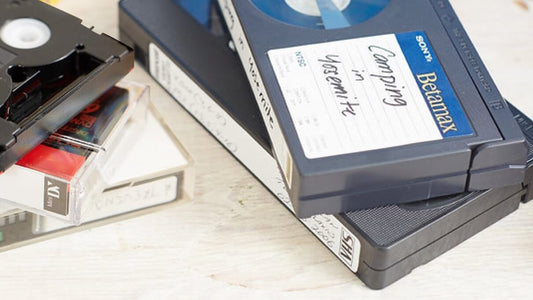Kodachrome, Kodak’s signature color reversal film, was used in motion picture films and still photography for over 75 years, but do you know what made it so revolutionary, iconic, and extraordinary for capturing so many precious memories throughout the years?
Capture has been preserving memories for over 20 years and we’ve processed countless rolls of Kodachrome film. We put together this comprehensive guide on Kodachrome film so you could know everything about the format and could use it to capture new memories while keeping your old memories alive.
Keep reading to learn all about Kodachrome photography and filmmaking including tips for using and processing the color film and how to preserve the analog format as high-quality digital versions.
Jump to:
- Understanding Kodachrome
- The Kodachrome Photography Experience
- Kodachrome Processing
- The Colorful History of Kodachrome
- Preserving and Digitizing Kodachrome
- Kodachrome's Legacy and Revival
Understanding Kodachrome

Kodachrome as we know it was first launched by the Eastman Kodak Company of Rochester, New York in 1935 as 16mm movie film, but throughout the years it was used in 8mm and Super 8 movie format, 35mm and 828 formats for still cameras, in photo slides, and more.
During the early 1930s, two professional musicians and university scientists named Leopold Godowsky Jr. and Leopold Mannes sought to improve the color of film photography. They improved upon the two-color types like Autochrome and Dufaycolor that relied upon bright projection lamps and didn’t offer vivid colors.
Their three-color film advancements became what is known as Kodachrome, the first mass-marketed color film that uses a subtractive color method. Kodachrome produced sharper color images than previous film types and made it possible for families to affordably capture memories.
Since then, there have been more improvements to keep up with the changing market. During the 1960s, Kodak released Kodachrome II, Kodachrome 64, Kodachrome 25, and other popular movie film and photo formats.
Versions of Kodachrome were used by professional and amateur photographers and filmmakers for 74 years, but other color transparency films like Fujifilm Fujichrome and Kodak’s Ektachrome offered a simpler and faster color development process.
Then, when digital photography erupted in the 1990s and early 2000s, Kodachrome sales rapidly declined. In 2009, Kodak discontinued the iconic film format. Within a year many processing labs also closed and by 2010 only one Kodak-certified facility was left called Dwayne’s Photo, located in Parsons, Kansas.
Their developer and National Geographic photographer Steve McCurry developed the last roll of Kodachrome film ever manufactured, marking the end of an era. However, all those old film reels and rolls still exist and the format stamped a lasting cultural impact on the world of photography.
The Kodachrome Photography Experience

If you have Kodachrome slide film, movie film, or any other type of Kodachrome that was released throughout the years, then you may be interested in learning how to shoot it. One thing to keep in mind is that it’s better to slightly underexpose the film instead of overexposing.
While it might take some practice, slight underexposure can actually make the colors look better, especially with subtle color changes found in nature. You also want to use a manual focus on your camera for the best results and should strive to use a combination of dark and light colors in the frame whenever possible.
Another important factor is the camera that you choose. There are plenty of 35mm and slide film cameras that you can choose from, but it’s a good idea to have one with an interchangeable lens, manual focus, and simple exposure meters. You also want a clear viewfinder. Some good Kodachrome camera options include the Milnolta X300, Nikon FE or FM, Olympus OM-1, or a Canon A-1.
Unfortunately, it’s pretty hard to find a lab that will process Kodachrome slides or any Kodachrome color photos. Some offer development as black and white though, which is an option. Then, you can use a Kodachrome slide scanner to digitize and colorize using editing software.
It may be possible to find a local camera shop that offers Kodachrome processing though, but it’s unlikely because the film format is considered obsolete. The other option is to process Kodachrome yourself, but since it’s not a typical color film, it’s likely you’ll only be able to produce black and white negatives.
Kodachrome Processing

The Kodak Kodachrome process uses three emulsions, each offering a primary color. These three layers are coated on a single film. This is different than other color film types that have dyes printed directly on the film stock and uses the K-14 process.
Dye isn’t added during the development process and the film is technically black and white itself. The three layers are sensitive to blue, green, and red. Using cyan, yellow, magenta, and other developers, the layers record the dye and produce a color photo or film reel.
Because this K-14 process is so unique and not used with other types of film, there are very few labs that still process Kodachrome in color. There are some independent developers that you can find through online forums, but in general, labs will only process Kodachrome as black and white negatives as mentioned above.
The Colorful History of Kodachrome

Kodachrome dominated the market for around 20 years and remained an industry staple much longer than that, which is why it had a lasting impact on photography and popular culture.
It was used by professional photographers and captured the coronation of Elizabeth II of the United Kingdom, President Kennedy’s assassination, the famous Afghan Girl photo, the Hindenburg explosion, and countless family memories for people across the world.
Additionally, Paul Simon wrote a song called Kodachrome that details all the Kodachrome pictures he captured with his Nikon cameras offering “nice bright colors.” Then, in 2017, a feature length Netflix movie called Kodachrome was released based on a New York Times article by A.G. Sulzberger. In the movie directed by Mark Raso, actors Ed Harris, Jason Sudeikis, and Elizabeth Olsen take a road trip to reach the final Kodachrome film processing lab before it closes forever.
As you can see, Kodachrome was not only popular, but captured the hearts and memories of families, professional photographers, and filmmakers throughout the decades.
Preserving and Digitizing Kodachrome

Now that you know Kodachrome’s history, it’s important to focus on the future of Kodachrome. Part of this is making sure that your old Kodachrome photos and films last forever for future generations to enjoy. To do this, it’s important to preserve Kodachrome images as high-quality digital copies.
There are a few ways to perform Kodachrome digital conversion. The first is to use a photo or film scanner machine. This allows you to transfer your memories directly to a memory card or hard drive. However, depending on the Kodachrome format you have, it is time-consuming and may not capture the true contrasting colors of your original copies.
The other option is to use a professional Kodachrome preservation company. Capture uses professional equipment to transfer your Kodachrome 35mm photos and slides as well as a wide variety of other types like 110 and 120 slides, 8mm film, Super 8 film, and 16mm film.
Plus, we understand how important your original analog media is to you, which is why we spent millions of dollars on an advanced tracking and security system that monitors your memories every step of the way. Combined with our satisfaction guarantee, you can have peace of mind as we preserve your Kodachrome memories and legacy forever.
Kodachrome's Legacy and Revival

Kodachrome had a lasting impact on photography and even though the film format has been discontinued and very few labs even process Kodachrome anymore, many photographers seek out old films to experience the nostalgia and flexibility of the format.
Plus, many people try to imitate the appearance of Kodachrome film with their modern digital ISO cameras. While the average family may no longer use Kodachrome or any film photography, the aesthetic is something that conjures up fantastic nostalgia.
While digital photos can offer a significantly higher resolution, better color, and crisper image quality, the iconic impact of Kodachrome is shown by vintage pictures taken with modern cameras. In fact, a few years ago Kodak said they might consider bringing the format back but decided that it wasn’t likely because of logistics.
If you want to join the Kodachrome revival, you can buy Kodachrome film and cameras online on eBay, Amazon, Etsy, and specialty camera shops like B&H Photo Video. You can also find places to process the film in black and white and possibly even color if you dig deep enough into forums like Photrio or DP Review.
Conclusion

Kodachrome offered a unique development process that improved the color and grain of still and movie film. Over the years, it made a lasting impact on culture and captured historical events and family memories for decades. In fact, movies and songs about Kodachrome have been released throughout the years and people still search for, use, and mimic Kodachrome with digital photography.
While it is hard to find a place to develop your Kodachrome film, you can have your old slides, photos, and film reels digitized to preserve them forever. Click here to learn more about Capture’s digitization services!



